
As Hong Kong’s last villages bow to development, what happens to their animals?
- Some 4,000 animals affected by Kwu Tung North and Fanling North housing projects will become homeless when residents relocate
- A 10-strong group is fighting a lone battle to sterilise and promote adoption for cats and dogs, while expert and lawmaker say government should do more
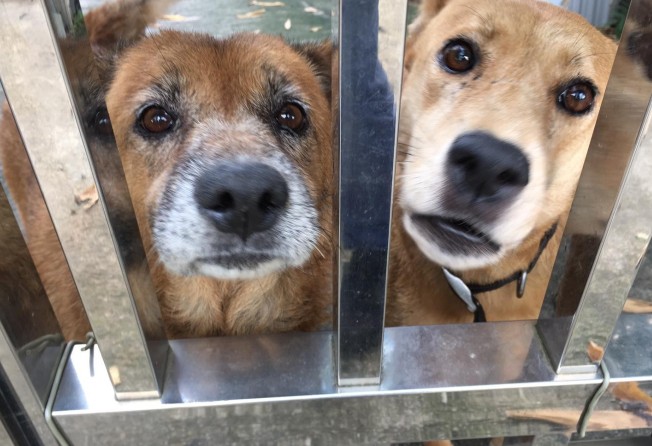
In the northeast New Territories of Hong Kong sits a quiet village untouched by the city’s dense urban jungle, where fresh air, rolling hills and wide open spaces provide a sanctuary that Becky Au Hei-man, 34, has known all her life.
Au grew up in Ma Shi Po Village in Fanling where her family has been tending farmland since the 1940s. On a typical day, when she is not helping with farm work, she sits at her doorstep, taking in the breeze and sprawling greenery around her, while one of her dogs, Mui Mui, a rambunctious one-year-old, runs circles around her, and her other 10-year-old canine rests in the shade. She has a cat, which is usually curled up somewhere in an aloof, snoozing bundle.

Au says she cannot imagine moving to the city and living amid its maddening pace, let alone abandoning her pets as there may be no space for them. She has vowed to take them wherever she moves to, but resettling will not be easy.
“They are my ‘sisters’, how can I leave them?” she says. “Like me, they grew up here. They will have difficulties adapting to a new environment.”
Au’s pets are among some 4,000 animals – 90 per cent of them cats and dogs while the rest include sheep, turtles and pigs – living in Kwu Tung North and Fanling North, close to the border with Shenzhen.
Under a government plan more than a decade in the making to free up more land for the space-starved city starting this year, many animals, an aspect often overlooked by planners, may be left homeless.
The project, “Hong Kong 2030: Planning Vision and Strategy”, was launched in 2007 to address the city’s long-term housing shortage and provide new jobs. It is expected to cover a total area of 612 hectares, providing some 71,800 flats – nearly 70 per cent of which are public housing – and creating some 40,100 jobs.
In May, the Finance Committee of the Legislative Council approved more than HK$33.5 billion for the first-phase development of the areas, which will resume about 68 hectares of private land and clear about 100 hectares of government land. Some 445 households involving about 1,160 people will have to move out over a period of two years or so starting this year.
Cathy Chan Hiu-wan, a volunteer dedicated to resettling the animals, says: “Once the bulldozers come, those animals will all die.”
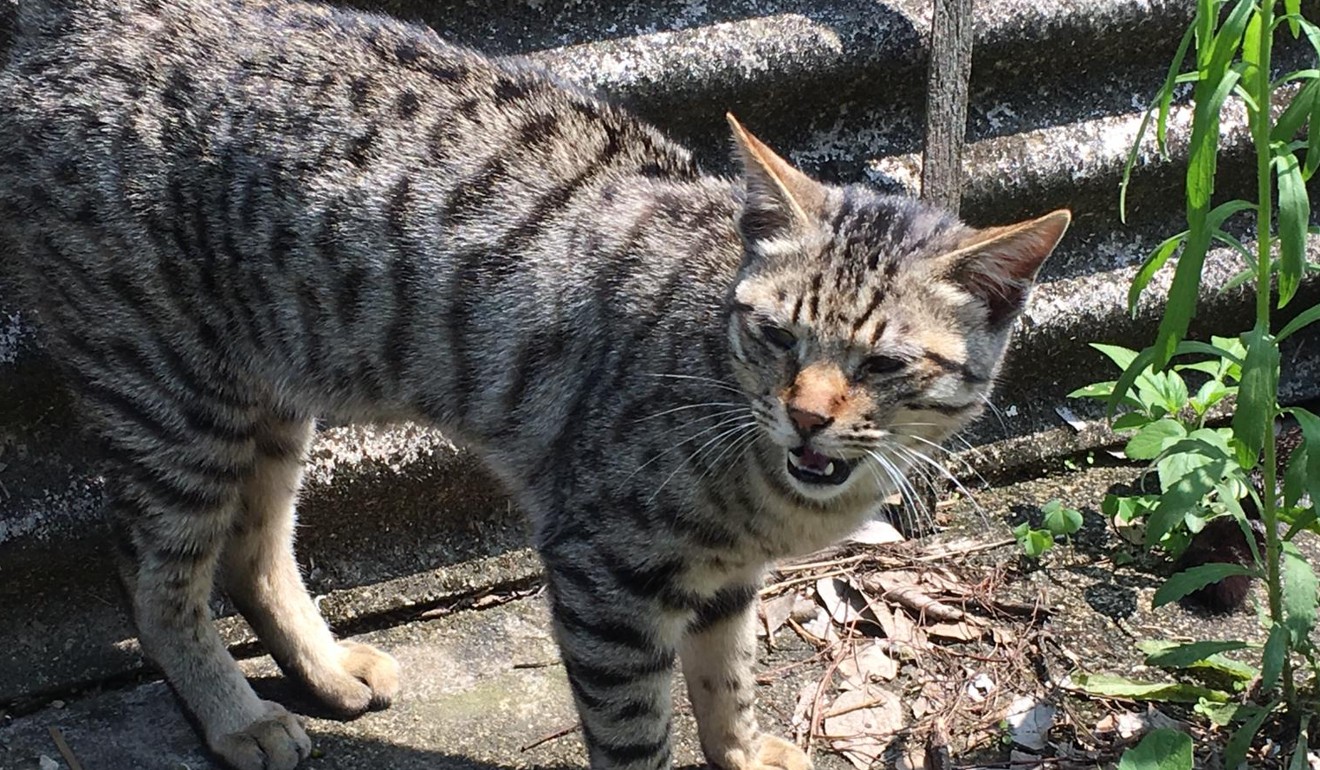
Suffer the animals
A lot of arable farmland in Hong Kong has disappeared over the years to make way for urban development, which critics blame for the demise of agriculture and the rural landscape.
To protest against the development of the northeast New Territories project, 13 activists charged at the city’s Legislative Council complex on June 13, 2014, when lawmakers were debating the controversial plan. All demonstrators were convicted of unlawful assembly, and jailed for eight to 13 months.
But Chan points out despite public concern over urban development, animals living there are for the most part ignored.
“In today’s political environment, most people have forgotten about the northeast New Territories development. When people talk about the land problem, they seldom take animals into consideration,” she says.
Chan, a freelance worker in her 30s who lives in Fanling, is a member of a group of 10, called the “Northeast New Territories Animal Rangers”, who are concerned about the future of animals in the area and trying to resettle them.

The group spent a year between 2017 and 2018, conducting an extensive survey, and visited more than 200 households, arriving at the population tally of some 4,000 animals.
Villagers are divided on the treatment of their animals – some say they will have no option but to abandon them, while others have been seeking alternatives, such as giving them up to friends or adopters, or looking for ways to take them to new homes.
“They don’t have many options, and at present, animals are not their priority as they are more concerned about moving,” Ji Qiushuang, 27, a member of the group, says.
According to Ji, around 50 households have moved out of the areas since August. Some even left earlier. In March alone, a dozen households moved out of Fanling, leaving behind more than 20 dogs, Chan says.
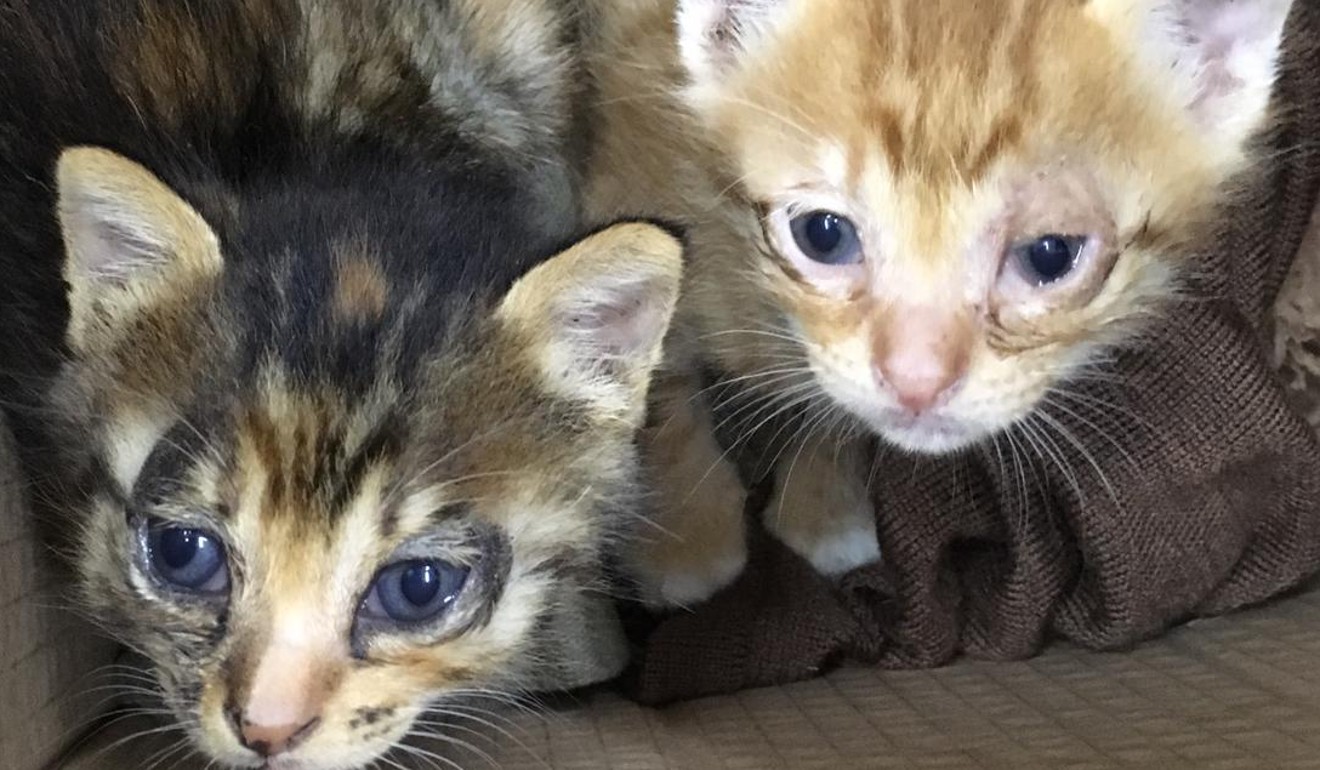
Meanwhile, it is difficult for villagers to take animals to new homes. Many people in the affected areas are eligible to move to public housing estates. However, the Housing Authority only allows tenants to keep small household pets, including desexed cats that do not pose health hazards or cause disturbances, while dogs are banned. Only those with special needs and requiring guide dogs for physical support or companion dogs for mental support would be considered, but medical proof is required for individual cases.
Shifting responsibilities
For those who are used to rural life, both humans and animals, resettling downtown with cramped surroundings and huge crowds can be challenging.
Wan Kwong-sing, 61, has lived in Ma Shi Po Village for over 50 years. Two years ago, he took home a black stray dog, and has since kept it. He calls it “BB” for baby.
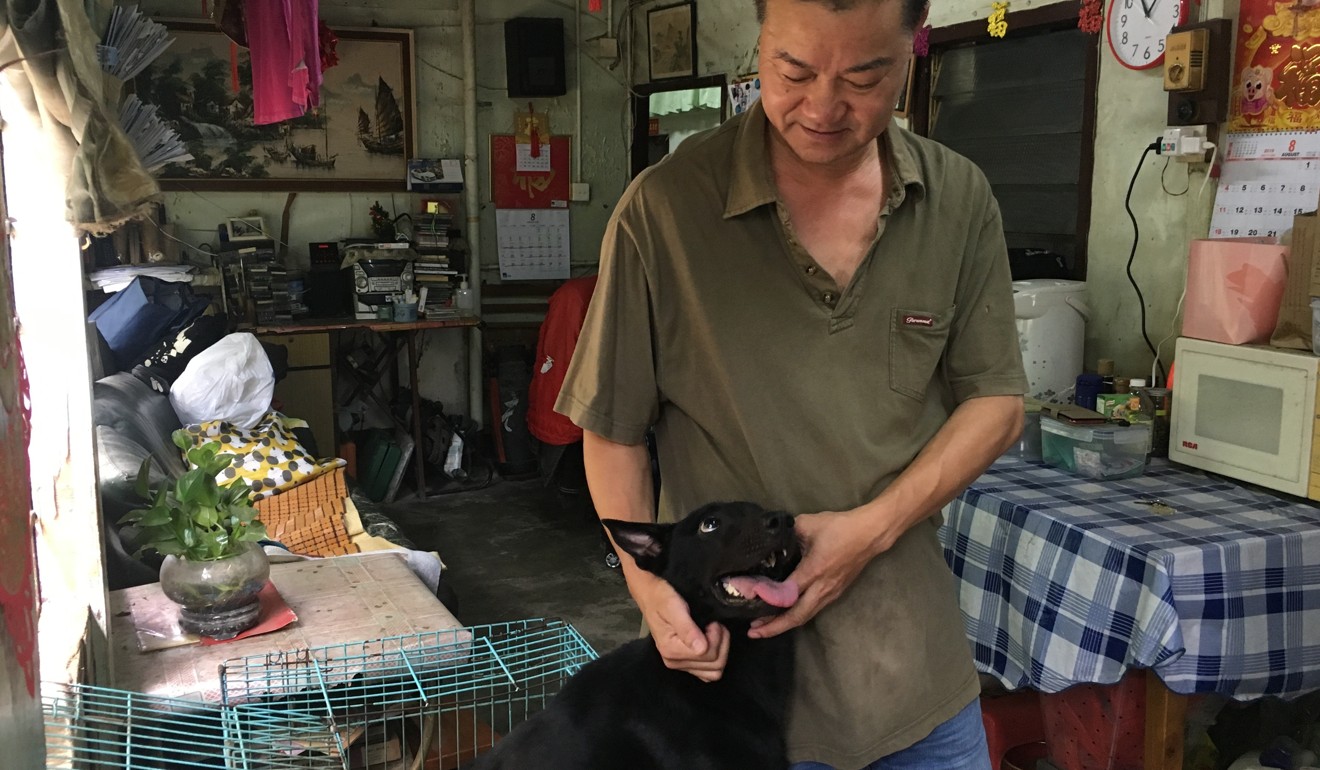
“Living in the village, I can keep a dog and grow flowers, and my dog has plenty of space to play around,” he says. But he is uncertain what will happen to BB when the time comes for them to move.
To help resettle the animals, Chan’s group has raised the issue to the government. The members have been contacting the Development Bureau and the Agriculture, Fisheries and Conservation Department, but both kept shifting responsibilities, Chan says.
“They said the animals are the owners’ responsibilities,” she says. However, more than half of the 4,000 animals in the affected areas already do not have owners, she adds.
Many affected villagers are elderly people, who believe in the natural breeding of animals, Chan says. They are against sterilisation, especially males, for fear the animals may lose their masculinity. The lack of awareness has led to the proliferation of animals in villages – most of which are unwanted and abandoned.
“Most villagers don’t assume the responsibility of their animals’ young. They don’t think of the newborns as theirs,” Chan says.
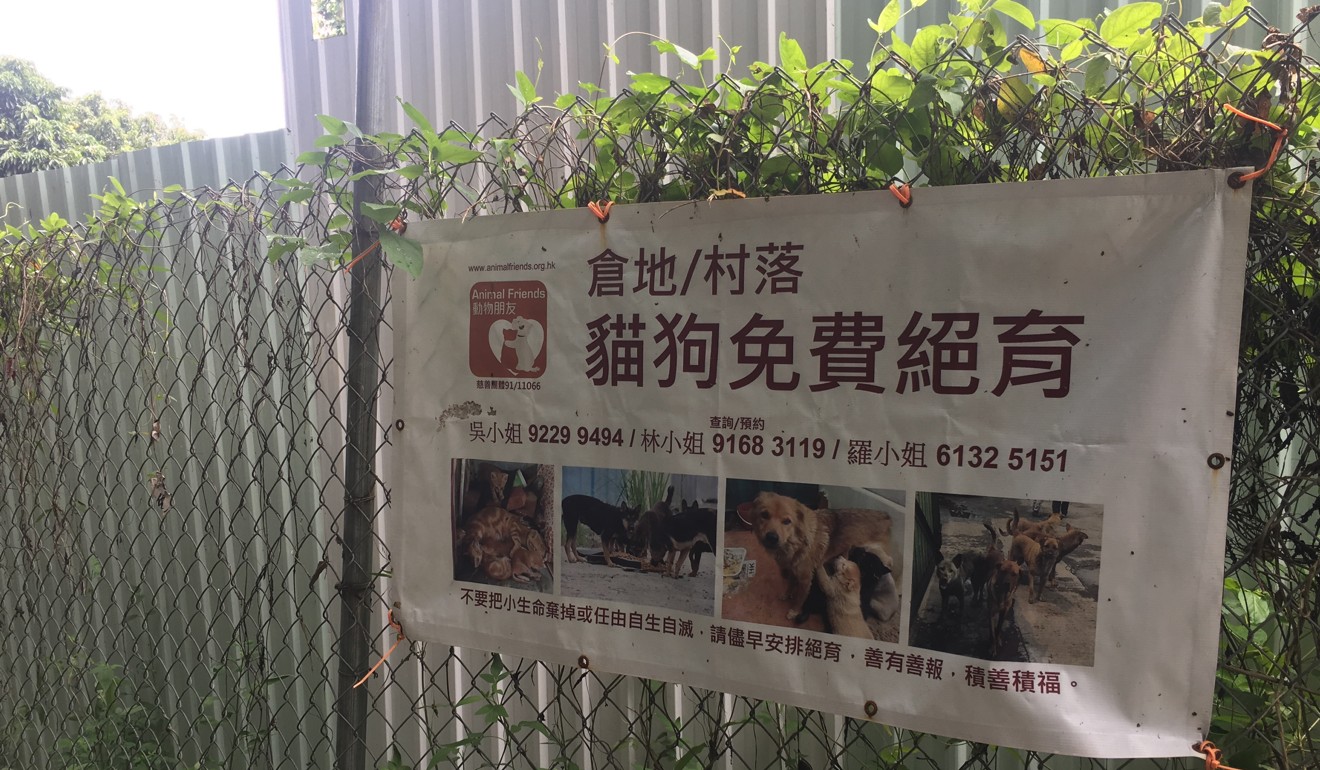
To curb the number of unwanted litters, the group has been urging owners to have their pets spayed and neutered, but the process is daunting. It begins with relentlessly persuading pet owners, and once the group receives a nod, the members then have to catch the roaming animals themselves.
Chan and other volunteers usually put 10 cages – lent to them free of charge by the Society for the Prevention of Cruelty to Animals (SPCA) – on the streets early in the morning with bait, and then check on them regularly. On some occasions, they can catch an animal in one day, but most of the time, it takes longer.
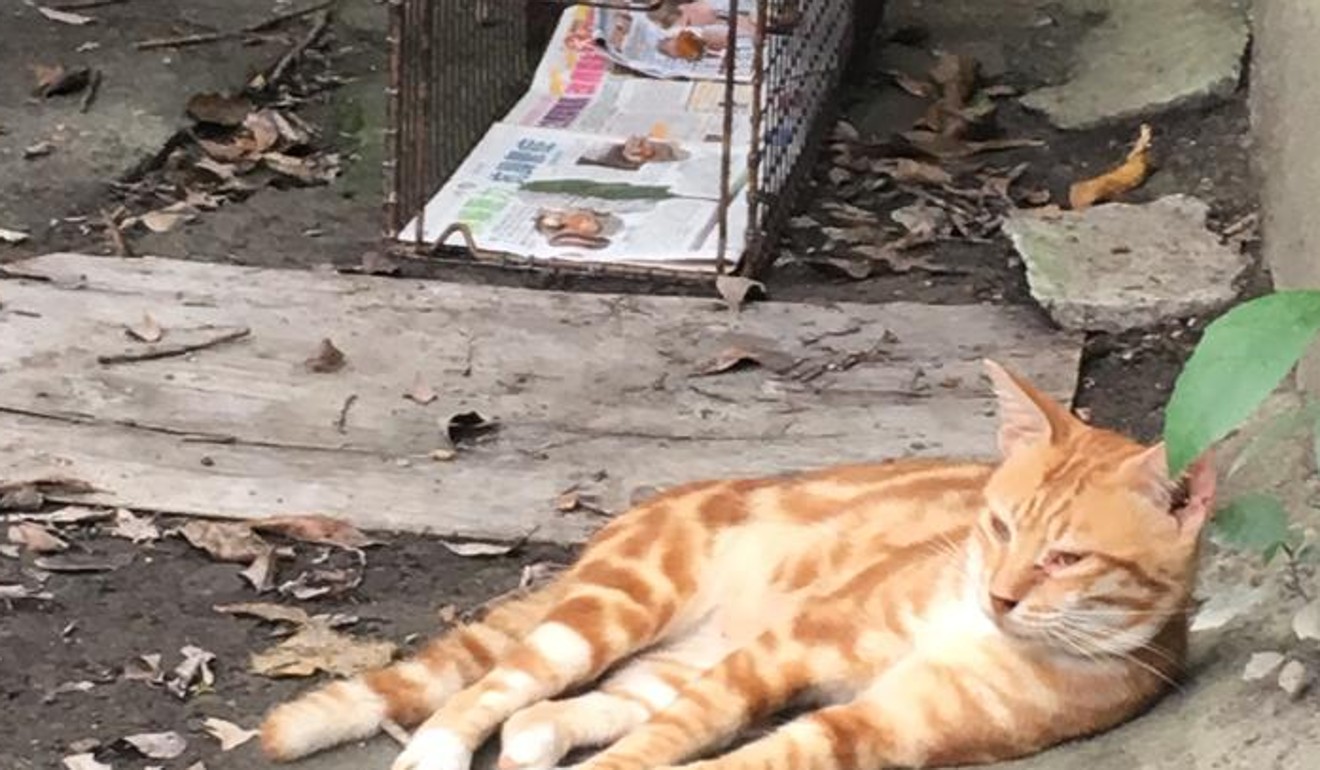
After capture, members then take the animals either to their own homes and nurse them, or place them on community farms, before sending them to the SPCA and the Society for Abandoned Animals (SAA) which provides free sterilisation procedures.
With the group’s help, more than 300 animals, mostly cats, have been sterilised.
Meanwhile, the group has been putting the animals up for adoption. But a major challenge is to ensure they are in good shape.
“Most of them are flu-stricken, while some have skin problems. Some cats even have feline Aids,” Chan says. In addition, most of the animals tend to be aggressive in captivity, which makes them less desirable to potential adopters, she adds.
With no other support, the burden of care also falls on the 10-member group. It usually takes a week for a sick animal to recover, but more serious cases may stretch for up to half a year.
So far, 91 cats, 26 dogs, 2 sheep and a hamster have found new homes, according to the group.
However, with the land resumption and clearance around the corner and a large number of animals waiting to be resettled, the group calls on the government to assume more responsibilities.
“We are only 10 people. We can’t cover hundreds of hectares,” Ji says.
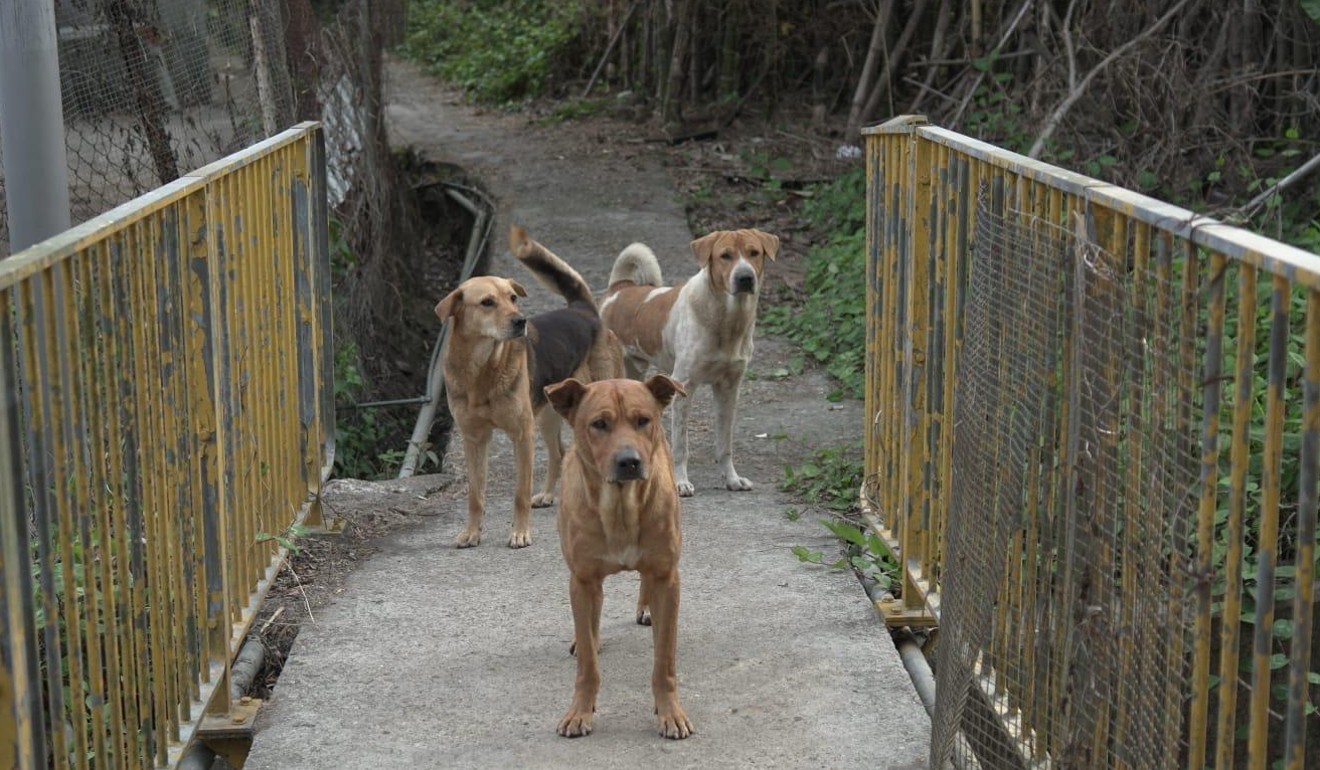
Dr Chan Ka-ming, a lecturer at the Hang Seng University of Hong Kong, says the government, as well as developers, should play an active role in helping animals left homeless by urban development, instead of simply relying on NGOs and the public who have limited resources.
“The government’s urban development has never taken animal welfare into consideration. It is a problem that has existed for a long time. The development of the northeast New Territories is not the only one,” Chan says.
The group urges authorities to set up a special interdepartmental team to coordinate and manage the resettlement of animals. Meanwhile, the government should provide resources and manpower for the sterilisation and adoption of animals, and establish a shelter for abandoned ones with proper training and grooming services, the group says.

They also call on the Housing Authority to make exemptions for relocating villagers to take their animals to public housing estates.
Lawmaker Fernando Cheung Chiu-hung from the New Territories East constituency has helped the group raise the issue to authorities. He says the government should conduct a census on animals in the new development areas, as there is no official data.
“From a humanitarian perspective, these animals should be taken care of,” he says.
The Post has contacted the Development Bureau and the Agriculture, Fisheries and Conservation Department over the matter.
Kwu Tung North and Fanling North in the northeast New Territories are only part of the government’s strategy to enhance land supply. Other sites, such as Kwu Tung South and Yuen Long South, have also been studied for development.
“Our goal is to push the government to establish a policy, which not only targets animals of the northeast New Territories, but also benefits those of other new development areas in Hong Kong,” Ji from the group says.
